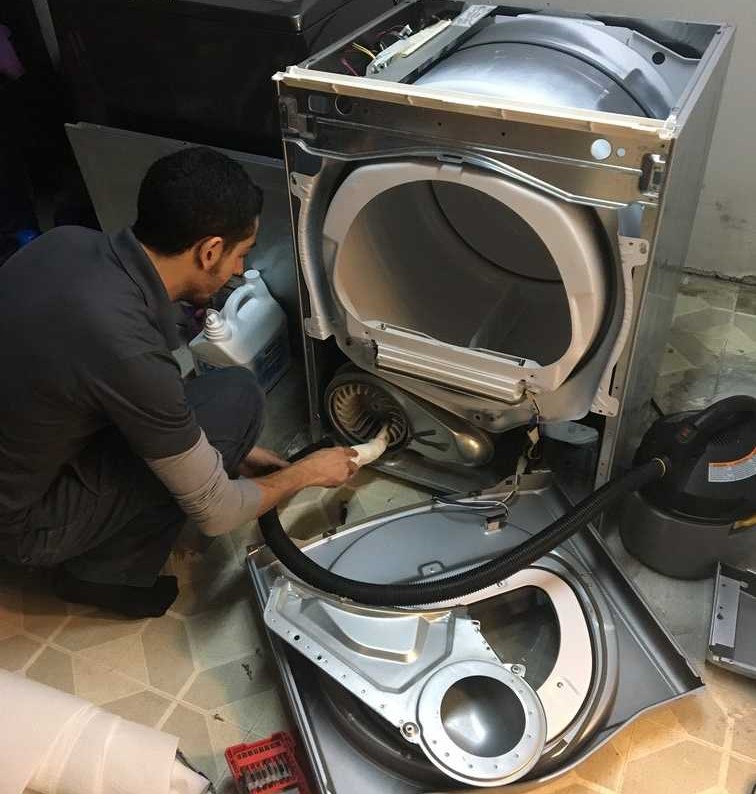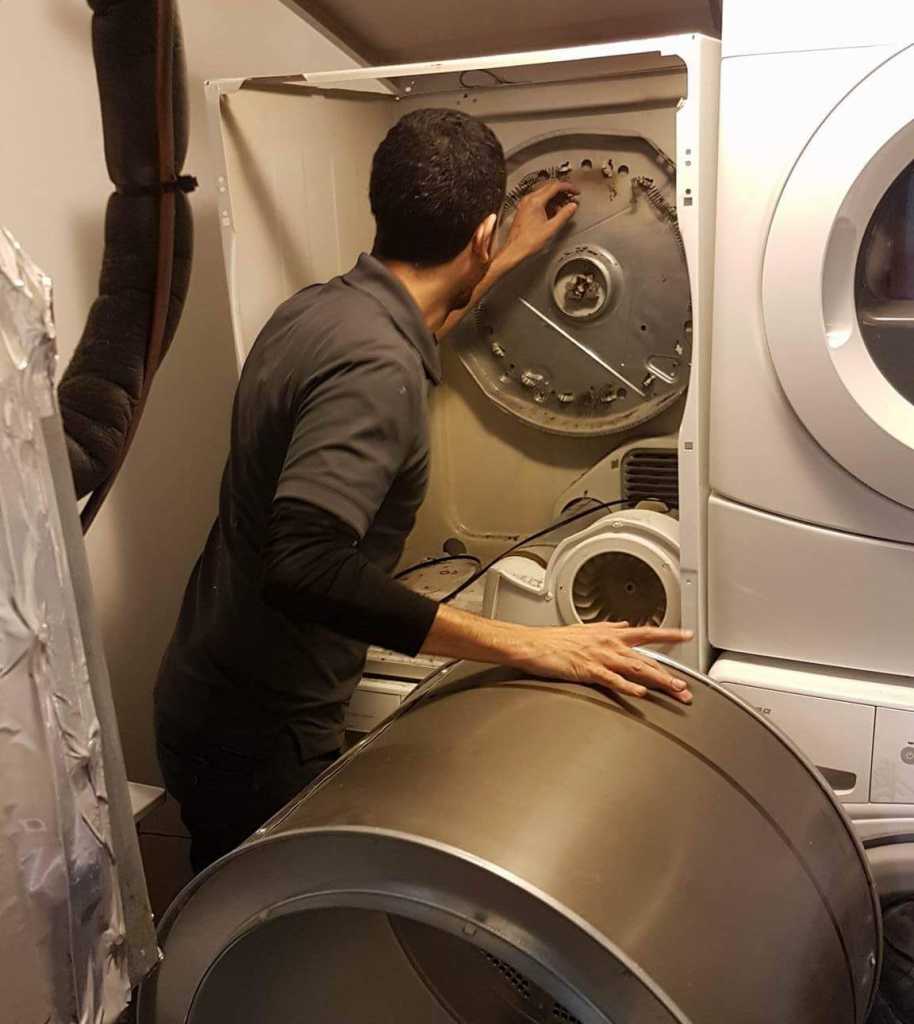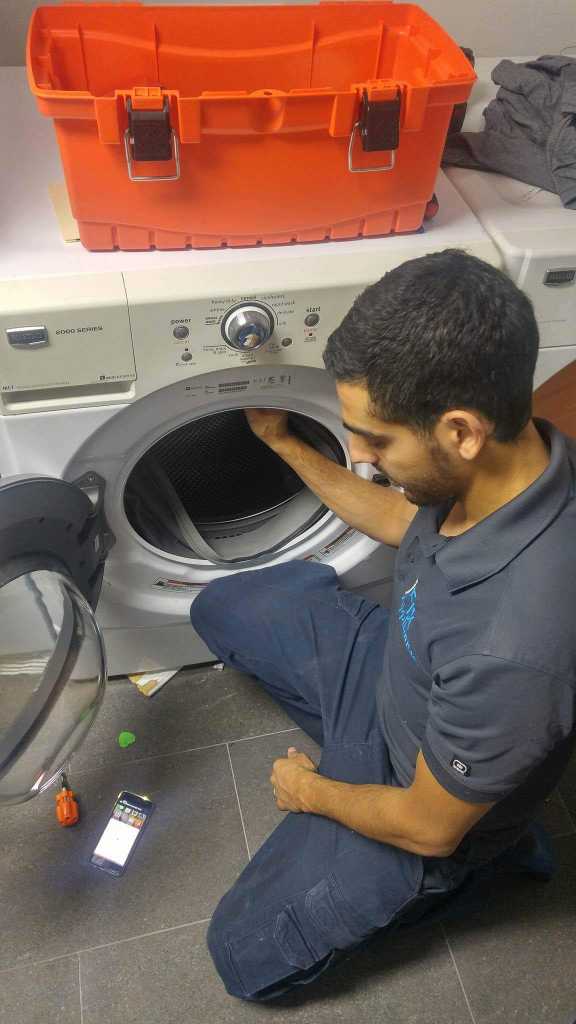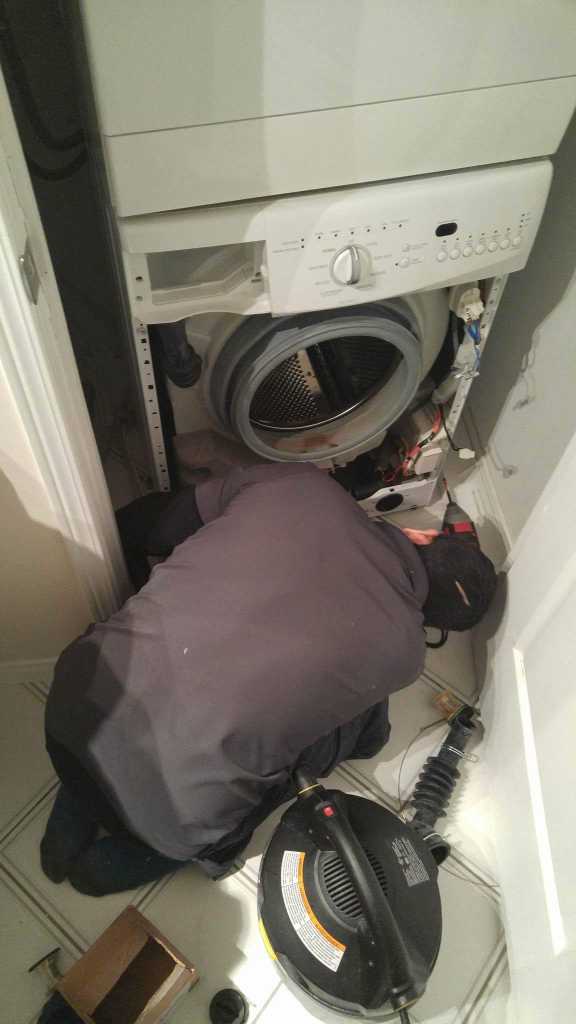There’s nothing more frustrating than walking into your laundry room only to discover a pool of water at the base of your washing machine. It’s a common problem that many homeowners have experienced. It’s an even bigger pain because it can be difficult to diagnose the cause of a leaky washing machine with so many possible causes to consider. In this article, we’ll take a look at how to diagnose the problem, repair the issue and review some warning signs that could help you stop a leak before it even starts!
Why Is the Washing Machine Leaking From the Bottom?
If you’re considering repairing or even replacing your leaky washing machine altogether, it’s important to know what can cause a washer to leak water from the bottom. Here’s a rundown of some of the most common causes of a leaky washer.
1. Broken Gaskets
Gaskets placed throughout the washing machine are there to ensure that no water leaves the appliance. Over time, the gaskets can dry out or get worn out and break. If there are some weak spots without a snug fit, you will get leaking at the bottom of your washing machine. In some cases, the gasket could just be loose. If this is the issue, you simply remove the front cover of the washer and carefully tighten all the bolts to ensure a better fit. If you observe major damage to the gasket, it may be time to replace it.
2. Hoses That Leak
Pretty much every washer uses hoses to carry a fresh supply of hot and cold water into the appliance. If the fittings or the hoses themselves are damaged, you will experience some leaking. There are also internal hoses to consider. If these have a faulty connection you will notice more leaking during the washer’s fill cycles. If you need to work on the internal hoses, take off the upper section of the appliance’s cabinet and investigate the hoses for any damages. Also, use this time to ensure that there are tight connections to the washer. If you notice any perforations or corrosion, now is a good time to replace any hoses.
3. Pulley Seal Leaks
It could be the pump’s fault that your washer is leaking from the base. The type of pump your washing machine has will determine how you might inspect and repair your leaky washing machine. Here are the main pump types used in washers:

● Belted
● An Electric System For Pumping
● Direct-drive
Gaining access to the washer’s pump requires you to take off the washer’s front or rear cover. Various washers have different ways of allowing you to access the pulley seal. Once you’ve removed the panel, it’s time to remove the belt, disconnect the hoses or unclip the pump depending on your pump type. Now that you have a visual of the pump, you can inspect it for signs of damage.
4. Door Seal Trouble
Of all the reasons for your washing machine to start leaking out the bottom, a door-seal failure is one of the easiest issues to fix and diagnose. In most cases, a washer might start leaking because something is preventing the loading door from making a tight seal. Often you can easily see if it’s some excessive detergent or dirt preventing the door from shutting completely. Replacing your door seal is a cheap and easy solution to your problem. Before you buy a new seal, be sure to consult a professional about which one goes with your particular model of the washing machine.
5. Miscommunication Of The Pressure Switch
This component of your appliance measures the water level in your washing machine and if it’s not functioning properly, it could easily lead to a leak out of the bottom of your washer. To check if the pressure switch is the culprit, remove the control panel from the washer. View this part for regular wear or cracks. Ensure that the washing machine’s wire is secured to the water source. If your switch is presenting a decrease in pressure, it’s almost certain that the component is damaged or faulty and must be replaced immediately.
6. Coupler That’s Cracked Or Broken
A coupler is the plastic or rubber seal that sits between the drum of the washing machine and the motor. It’s designed to break apart during a malfunctioning event so the machinery will be spared even more damage. This is good for you because a coupler is easy and cheap to replace in the event of its failure. If your clothes are soaked after a wash cycle and your washing machine is leaking from the bottom, a broken coupler is likely the cause.

A coupler is the plastic or rubber seal that sits between the drum of the washing machine and the motor. It’s designed to break apart during a malfunctioning event so the machinery will be spared even more damage. This is good for you because a coupler is easy and cheap to replace in the event of its failure. If your clothes are soaked after a wash cycle and your washing machine is leaking from the bottom, a broken coupler is likely the cause.
7. Catch Basket Or Filter That’s Clogged
Like the lint trap in your dryer, a washing machine has a catch basket that works very similarly. With regular use, the basket can get full of fibres that will eventually start appearing in your clean clothes. However, it can also be the cause of leaking from the bottom of your washing machine.
You can locate the washing machine’s basket usually on the top edge of the washer’s drum. Alternatively, it may be found on the top of the centre pillar, also known as the agitator inside the drum. Sometimes it can even be on the end of the drain hose. Some washers have a removable screen here that you can clean. Some newer models of washing machines don’t have catch baskets at all.
So How Do You Fix Washing Machine Leaks?
Depending on your washing machine’s model as well as the actual failing component causing the appliance to leak from the bottom, these are some of the most common troubleshooting methods you can try.
Hose Inspection
If you’re experiencing leaking from the bottom of your washing machine, there are two types of hoses to inspect while troubleshooting the problem: The fill hoses and the drain hoses. Here’s an easy way to inspect all hoses with little hassle.
- Unplug your washing machine and look at the back of the appliance to ensure that the connections are tight enough.
- If upon first review you can’t identify obvious signs of leaks, you might need to take a closer look. It’s time to open up the washer’s cabinet component so you can get uninhibited access to the appliance’s hoses.
- Observe the hose’s structure for any abrasions or cracks.
- If there are signs of damage, replace the hose. Not all hoses have to be replaced at the same time. You can easily remove a single worn-out hose to swap it out for a new one.
Tub Gasket Inspection
The gasket connecting the tubs of the washing machine must be tightly sealed. Here’s how you can make sure this component is still functioning properly:

- Unplug the washing machine from power and disconnect the appliance’s front cabinet.
- To gain direct access to the gasket, remove the cover of the tub.
- Does your gasket show signs of ageing and wear as well as scratches? It’s time to look closely.
- If you notice any cracks or other significant damage, it’s time to replace the gasket. Be sure to consult a professional about obtaining the correct model.
Inlet Valve Assessment
Run a short test to ensure that the flow of water is not blocked by a malfunctioning inlet valve. This is how you do it:
- Ensure that your washing machine is disconnected from both water and power sources before you begin.
- Take off the appliance’s rear panel so you can look closely at the inlet valve. On many models, the valve is located behind the washing machine’s hose connections.
- Check the screens on your valve for built-up dirt and debris. As dirt collects on the screen, it can mess around with the valve’s ability to efficiently control the entry of water into the tub. When the valve malfunctions, this ends up causing water to leak from the bottom of your machine.
- Grab your multimeter, setting it a mode of Rx1. Then, connect the probe to the exit valve. Take the reading you obtain and compare it to your washing machine’s manual to see if it matches the manufacturer’s recommended performance statistics.
- It’s time to replace the valve if you see damage or if your multimeter probe reading gives you an infinity error code.
What To Do If Your Washing Machine Is Leaking A Lot

The biggest trouble with a leaky washing machine is that it can produce a lot of water, we’re talking litres at a time! Also, we tend to trust that our appliances will do their job properly so we leave them unattended for hours. This gives even more time for a leak to do major damage to your home, especially to your flooring and drywall.
Water damage might not seem like a big deal but it can quickly lead to big problems and you should have it addressed as soon as possible. Consider hiring a water damage restoration professional in your area, and then you can focus on trying to fix your washing machine.
Call Us Today
I-Fix Appliance Repair is the GTA’s most trusted appliance repair crew. We work on all models of washing machines. Offering same-day service, our highly-trained professionals will work quickly to get your appliances up and running again. Call us today for a free quote and we’ll send a technician to your home right away.

